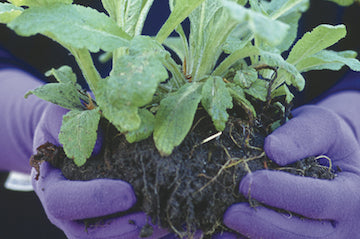Herbs for Montana gardens
Herbs: Flavor At Your Fingertips
By Amy Grisak
Even though there’s a wide variety of dried herbs available at the grocery stores these days, there’s nothing like using fresh ones picked immediately before you use them.

When you need that pinch of flavor, don’t reach for the desiccated, flavorless selection on your spice rack, create your own blends by keeping a few herbs at your fingertips in herb pots within easy access of your kitchen.
You can plant your herbs either in one large container or a series of small pots. In either case, be sure the container provides good drainage so watering won’t over-saturate the plants. Even though herbs typically don’t need much fuss or pampering, a monthly feeding with a water-soluble fertilizer is easy to do and will keep them happy in their confined area. All of the following recommendations prefer full sun.
Basil - A must not only as part of the ensemble for spaghetti, but as the classic stand-alone pesto. Sweet basil can grow up to 2-ft tall. Keep it well pruned by pinching off leaves to use in the kitchen, and absolutely don’t let it go to seed or the flavor will suffer.
Oregano - Use the leaves of this vigorous perennial on pizza or in sauces. The pinkish-purple flowers also work well tossed into salads. Since it is a perennial herb, it can over-winter with a little care in the container, or can be planted in the ground to last for many years.
Marjoram - This delightful little annual is the mild cousin to oregano with a intoxicatingly sweet fragrance and flavor. Use it the same as you would oregano, as well as in anything that requires a less pungent flavor.
Thyme - There are over 400 varieties of thyme, but the common thyme that grows ten to twelve inches tall works best for summertime containers. It’s smashing in sauces, soups and particularly foods cooked with wine. Because thyme is a little more tender as a perennial it either needs to be heavily mulched in the container, or preferably planted in its own space at the end of the season.
Italian Parsley - This isn’t the curled leaf, plastic-tasting parsley you find on the edge of your plate at a restaurant. Flat-leafed Italian parsley packs a lot of flavor and works great as a base seasoning that compliments nearly any meat or vegetable dish.
Rosemary - The piney fragrance of rosemary works great with chicken, pork, or in roasted red potatoes with garlic and olive oil. You can bring rosemary indoors during the winter, but be sure to keep it away from heat vents or drafts and don’t over water.
Dill - Dill is the essential element in many fish recipes. It also compliments the flavors in cucumber salads and many vegetable dips. You use the fresh leaves for grilling or in salads, and the seeds are a must for making pickles. Dill can grow up to 3-ft so be sure to plant it towards the back of the container. The leaves are picked throughout the season as needed, but wait until the seed heads mature and are slightly dry before harvesting.



